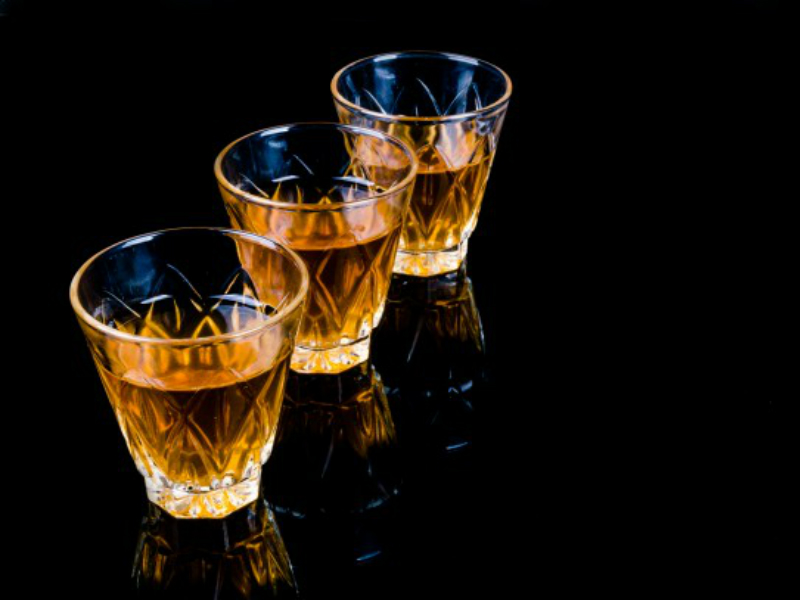Jews are supposed to wear costumes and get drunk on Purim, to mark the holiday as exceptional – on all other days, normal dress and sobriety are preferred. The Purim costume party is a relatively new development, dating to the medieval period. Centuries earlier, the rabbis of the Talmud mandated getting sloshed. Jews are obligated to drink so much on Purim that they cannot distinguish between “blessed is Mordecai” and “cursed is Haman.”
Though the subsequent verses caution against excessive drunkenness, the commandment to get wasted on Purim is considered halakhah, codified in the Shulkhan Aruch, the comprehensive legal code by 16th-century Sephardic Rabbi Joseph Karo, which remains a foundational text for Orthodox Jews.
Rabbi Moses Isserles, Karo’s Ashkenazic contemporary, took issue with this interpretation. More cautious, perhaps because alcohol was more prevalent in Christian Europe than in the Muslim world, Rabbi Isserles thought one didn’t need to get blackout drunk on Purim, just “drink more than he is used to,” and then “fall asleep.”
In Ashkenazic communities, Jews entered the liquor industry, as distributors and tavern owners, but seldom drank to excess. Unlike Muslims and Mormons, Jews were never prohibited from drinking alcohol, and sacramental wine has always been a part of our rituals, particularly on Shabbat. The Yiddish phrase, “shikker iz a goy” (the gentile is a drunk), entered the lexicon as non-Jews became associated with drinking and Jews became known for their sobriety.
Abe Cahan, editor of the Yiddish Daily Forward, confirmed this stereotype. When he met Friedrich Engels in 1891, the German socialist luminary offered him a beer, and then another. Cahan declined the second glass, remarking, “You know, Comrade Engels, the Jews are not drinkers.” Engels replied, “Yes, that’s really a pity. If Jews drank more, they would be even better people.”
READ: WEINFELD: THE INTERMARRIAGE CONSENSUS
According to family lore, my paternal grandfather could drink like a fish. This came in handy in Nazi-occupied Poland, where he briefly posed as a non-Jewish botanist named Zbigniew Zapetsky. His ability to drink lots of alcohol made him appear goyish. The stereotype saved him.
As late as the 1990s, comedian Jackie Mason invoked this trope. “When intermission starts, every gentile is going to turn to one another and ask: ‘Drink? You wanna drink?’ And every Jew will ask: ‘Did you eat yet?’ ”
In my house, the stereotype held. When I was 17, I invited friends, Jewish and gentile, over to drink from my parents’ liquor cabinet. It had alcohol left over not just from my bar mitzvah, but from my bris, as well. To this day, my mother has never been to a bar. And my father will nurse a beer over several hours – a skill I have inherited.
That said, I have many Jewish friends who drink liquor: bourbon, scotch on the rocks, shots of tequila. And some of them claim to enjoy it. For the vast majority of my Jewish peers, drinking alcohol is commonplace, with at least mild drunkenness being the desired goal. With greater assimilation comes new behaviours, including, perhaps, increased alcohol consumption.
Younger generations of Jews may not even be aware of this sober stereotype. More Jews by choice, interfaith marriages and immigration from the former Soviet Union have likely affected Jewish drinking habits. Participating in modern drinking culture – in bars, in college and at house parties – has become a normal part of Jewish life in North America. The quantity of alcohol consumed may still differ between Jews and gentiles, but the lifestyle is the same.
If drinking to excess becomes a Jewish norm, Purim becomes less special. But in Canada in 2019, perhaps there is another way to make Purim merry. If I were to revise halakhah, I’d offer Jews a non-alcoholic alternative to fulfil the mitzvah of drunkenness on Purim. Jews should get higher than the point on Haman’s hat, and then we’d all feel blessed and eat all the hamantashen in sight.
